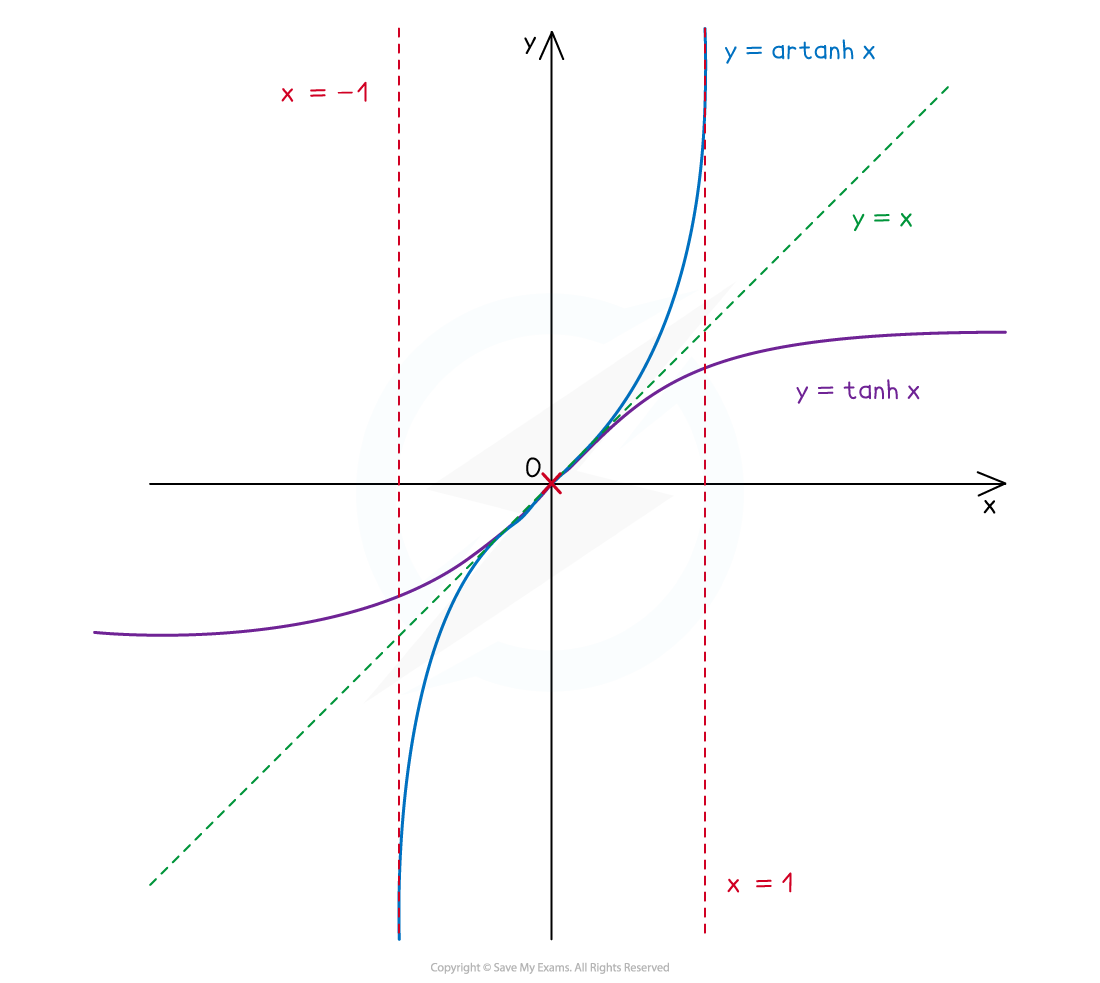Logarithmic Forms of Inverse Hyperbolic Functions (Edexcel A Level Further Maths) : Revision Note
Logarithmic Forms of Inverse Hyperbolic Functions
What are the definitions of the inverse hyperbolic functions?
,
,
Since coshx is a many-to-one function, its domain is restricted to x ≥ 0 when finding the inverse
Therefore, its range is coshx ≥ 1
So, the domain of the inverse function is x ≥ 1
,
These three definitions are in the formula booklet
What are the graphs of the inverse hyperbolic functions and their key features?
As they are inverse functions, they are reflections of their original functions in the line y=x
Domain:
Range:

Domain:
Range:

Domain:
Range:

How do I derive the logarithmic formulae for the inverse hyperbolic functions?
You need to be able to derive each inverse from the definition of the original
STEP 1
Write in terms of e
and rearrange to
STEP 2
Form a quadratic in terms of ey
Multiply by 2ey and rearrange
STEP 3
Solve the quadratic and find an expression for y
Reject
as this produces negative values as
whereas
The derivations of the other two formulae are similar
For
both
and
are well-defined for
We choose
as
and it can be shown that
Examiner Tips and Tricks
Be careful when working with the circular (“normal”) inverse trig functions and the inverse hyperbolic functions
Only the “ar” denotes inverse
The “c” in arcsin x, arccos x, arctan x indicates the circular functions
The hyperbolic functions have “h”, but the “h” doesn’t come immediately after the “ar”: arsinh x, arcosh x, artanh x
Be careful not to confuse these, especially when looking them up in the formulae booklet
Worked Example
Starting from the definition of , show that
when
.


You've read 0 of your 5 free revision notes this week
Sign up now. It’s free!
Did this page help you?
